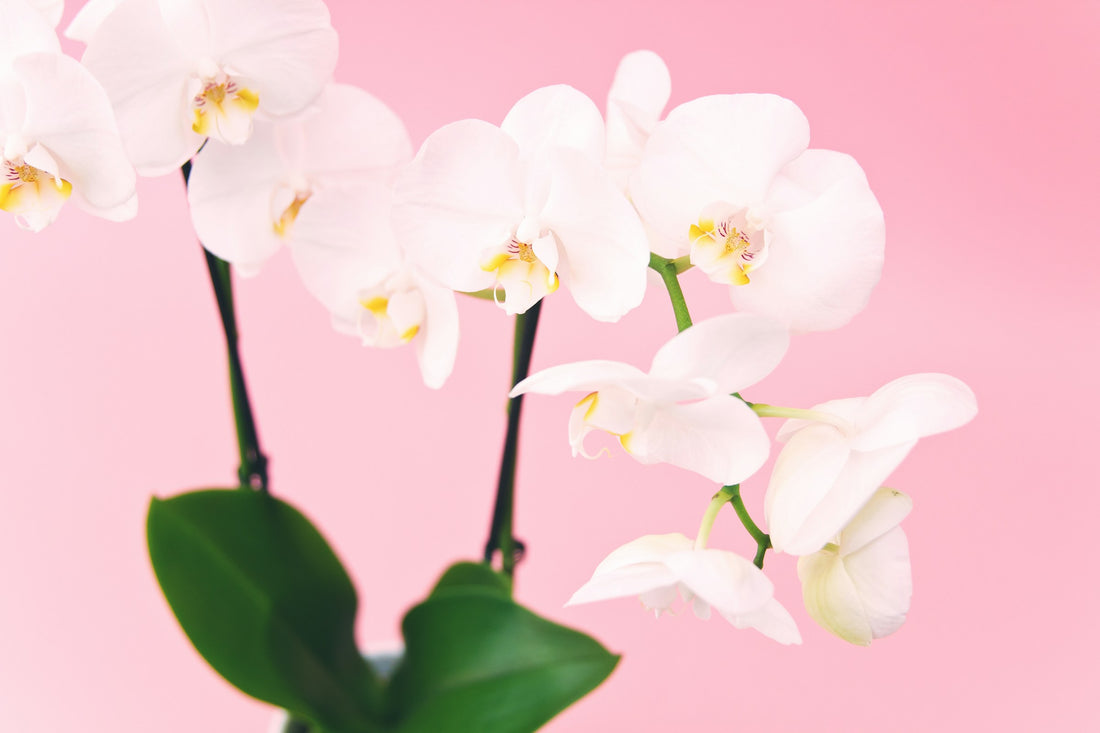5 Reasons Moth Orchids are the Perfect Gift for Any Occasion

Are Phalaenopsis and Moth Orchids the same thing?
Orchids are a diverse and fascinating family of flowering plants, known for their intricate and often exotic blooms. Among the vast array of orchid species, Phalaenopsis, commonly known as the moth orchid, stands out as one of the most popular and widely cultivated varieties.
What are Orchids?
Orchids belong to the Orchidaceae family, one of the largest plant families in the world, with over 25,000 species. These plants are known for their unique flower structures, often featuring vibrant colors, unusual shapes, and elaborate patterns.
Why is it called Phalaenopsis?
The name Phalaenopsis comes from the Greek words "phalaina," meaning "moth," and "opsis," meaning "appearance." This name was inspired by the resemblance of the orchid's flowers to moths in flight. The genus Phalaenopsis includes around 60 species and numerous hybrids, making it a favorite among orchid enthusiasts for both its beauty and ease of care.
5 Reasons Moth Orchids are the Perfect Gifts for Any Occasion
Moth orchids are the perfect gift for any occasion due to their timeless beauty, long-lasting blooms, ease of care, and the meaningful symbolism they carry. Here are some key reasons:
- Timeless Beauty and Elegance: Moth orchids, with their graceful, butterfly-like flowers, come in a variety of colors and patterns. Their sophisticated and refined appearance makes them suitable for both formal and casual occasions.
- Long-Lasting Blooms: Unlike cut flowers, moth orchids can bloom for several months, providing a lasting reminder of the occasion they commemorate. This longevity makes them a practical and thoughtful gift.
- Ease of Care: Moth orchids are relatively easy to care for, making them accessible even for those without a green thumb. They require minimal maintenance, with basic needs for light, water, and temperature.
- Symbolism and Meaning: Orchids often symbolize love, beauty, strength, and luxury. Moth orchids, in particular, are associated with elegance and grace, making them a meaningful gift for expressing admiration, appreciation, and affection.
- Versatility: Moth orchids are versatile and can be given for various occasions, including birthdays, anniversaries, weddings, graduations, or as a gesture of sympathy. Their universal appeal makes them a suitable choice for almost any event.
Overall, moth orchids combine aesthetic appeal, practicality, and meaningful symbolism, making them an ideal gift that can be appreciated and enjoyed for an extended period.
Commonly Asked Questions About Orchids!
Are Phalaenopsis/Moth Orchids all year round?
Phalaenopsis orchids, commonly known as moth orchids, are often perceived as year-round plants due to their ability to bloom at any time of the year under the right conditions. However, their natural blooming cycle and specific care requirements do play a role in determining when and how frequently they flower.
In their natural habitat, Phalaenopsis orchids typically bloom in late winter to spring. However, when grown indoors or in controlled environments, they can be encouraged to bloom at various times throughout the year. The ability of Phalaenopsis to bloom multiple times a year makes them highly desirable among orchid enthusiasts.
What Factors Influence Year-Round Blooming?
- Temperature and Light: Proper temperature and light conditions are crucial for encouraging Phalaenopsis orchids to bloom. They prefer bright, indirect light and temperatures around 18-24°C during the day, with slightly cooler temperatures at night. A slight drop in temperature at night can help initiate blooming.
- Humidity and Watering: Consistent humidity levels (around 50-70%) and proper watering practices are essential for healthy growth and flowering. Overwatering can lead to root rot, while underwatering can cause dehydration, both of which can impact the plant's ability to bloom.
- Feeding and Maintenance: Regular feeding with a balanced orchid fertiliser and proper maintenance, such as pruning spent flower spikes, can promote healthy growth and encourage reblooming.
While Phalaenopsis orchids are capable of reblooming multiple times a year, it's not guaranteed that they will do so continuously. After the initial blooming period, they may enter a rest phase before producing new flower spikes. However, with proper care and optimal conditions, many Phalaenopsis orchids can bloom more than once a year, providing flowers at different times.
How to care for a Phalaenopsis orchid?
Phalaenopsis orchids thrive in bright, indirect light and should be watered when the potting medium is nearly dry. They prefer temperatures between 18-24°C and humidity levels around 50-70%. Use a well-draining orchid potting mix and provide proper ventilation.
How often should I water my moth orchid?
Watering frequency depends on the environment, but generally, water once a week. Ensure the potting medium dries out slightly between waterings to prevent root rot. In more humid conditions, you may need to water less frequently.
What should I do with the flower spike after the blooms fall off?
You can either cut the spike back to the base or above a node (small bump on the spike) to encourage potential secondary blooms. If the spike turns brown and dries out, it's best to cut it off completely.
Why are the leaves of my moth orchid turning yellow?
Yellowing leaves can result from overwatering, underwatering, insufficient light, or natural aging. Check the roots and potting medium for signs of rot or dryness, adjust watering, and ensure the plant gets adequate light.
Do moth orchids need fertiliser?
Yes, Phalaenopsis orchids benefit from regular feeding. Use a balanced orchid fertilizer, diluted to half strength, every 2-4 weeks during the growing season. Reduce feeding in the winter or during dormancy.
How long do Phalaenopsis orchid blooms last?
The blooms can last several weeks to several months, depending on the plant's health and environmental conditions.
Can I repot my Phalaenopsis orchid while it's blooming?
It's best to repot after the orchid has finished blooming, as repotting can stress the plant and cause flowers to drop. However, if the plant is suffering from root issues or the medium is breaking down, repotting during bloom may be necessary.
What kind of light do moth orchids need?
Phalaenopsis orchids thrive in bright, indirect light. Direct sunlight can scorch their leaves, while too little light can inhibit blooming. A north or east-facing window is often ideal.
What type of pot is best for Phalaenopsis orchids?
Clear plastic pots with drainage holes are commonly recommended because they allow you to monitor root health and moisture levels. Clay or ceramic pots can also be used, but they should have adequate drainage.
What should I do if my orchid’s roots are rotting?
If you notice rotting roots, remove the affected roots with sterilized scissors and repot the orchid in fresh, well-draining medium. Adjust your watering routine to prevent future root rot.
What are Phalaenopsis Orchid Spikes?
In orchids, particularly Phalaenopsis (moth orchids), a "spike" is the stem that grows from the plant and produces the flowers.
Spikes typically emerge from the base of the orchid or between its leaves. As the spike grows, it develops buds that will open into flowers.
Commonly, orchids come in Single Spike, Double Spike and Triple Spike.

Single Spike White Orchid ( Photo by KATRIN BOLOVTSOVA)

Double Spike Pink Orchid ( Photo by Mathias Reding)
Phew! That was a lot about Phalaenopsis or commonly known as Moth Orchid! Feel free to drop a comment or reach out to us with any questions!
If you'd like to get this or gift this to someone in Newcastle or Lake Macquarie, you can check it here. Same Day delivery is available for orders placed before 1pm.
Click here for ALL the suburbs we deliver to.
Photo by clau alexa on Unsplash

